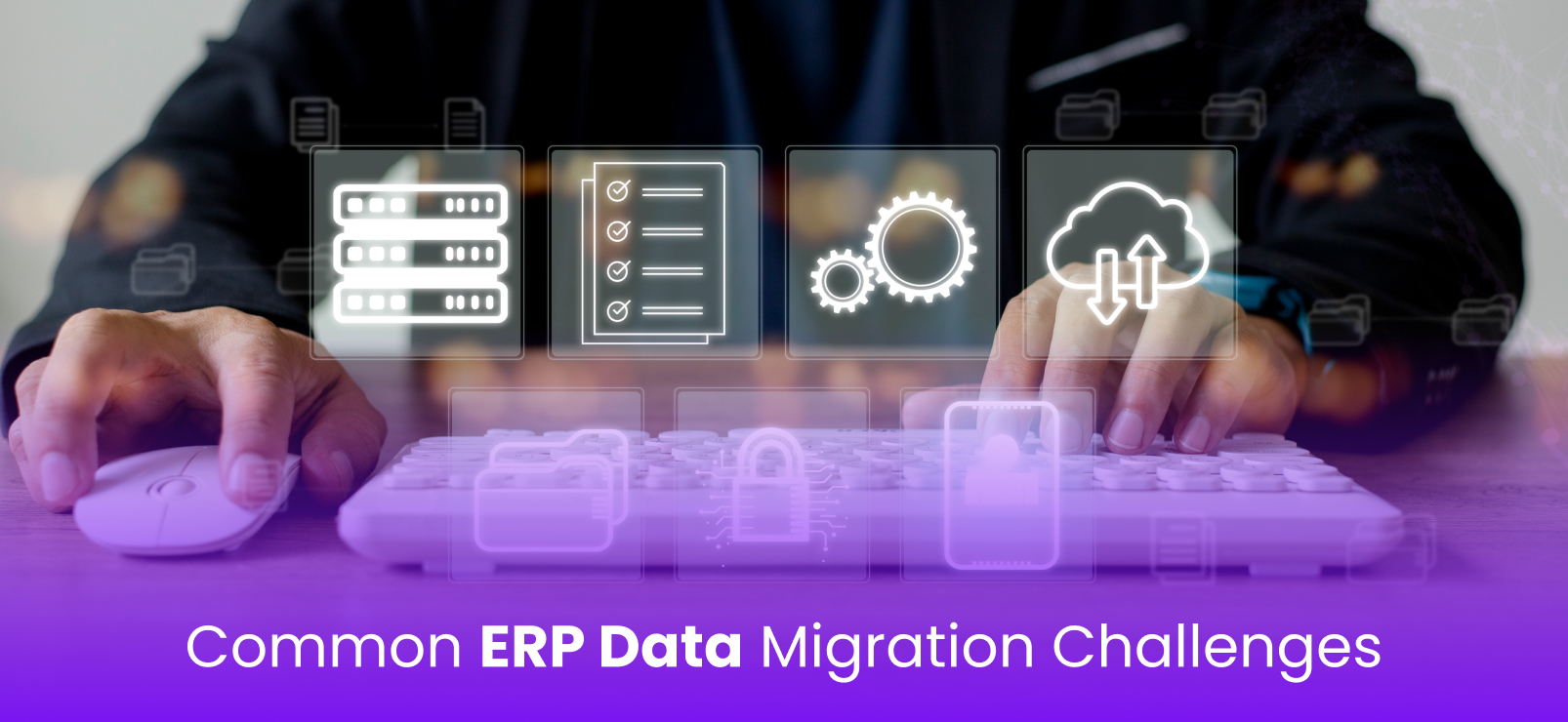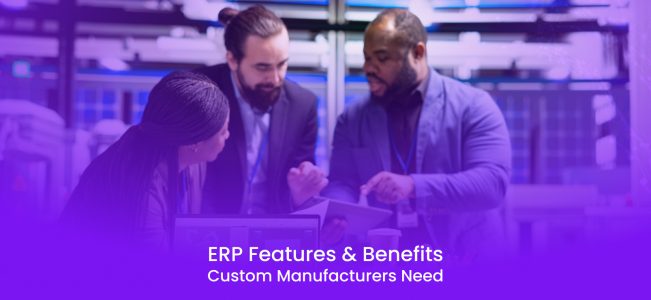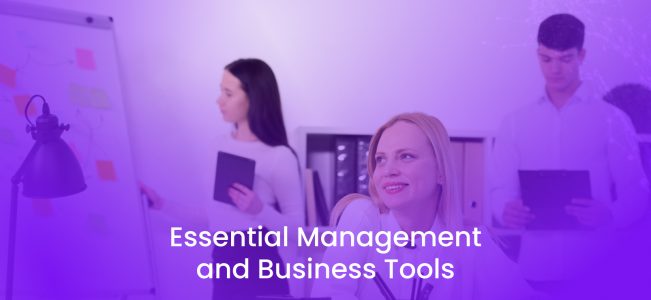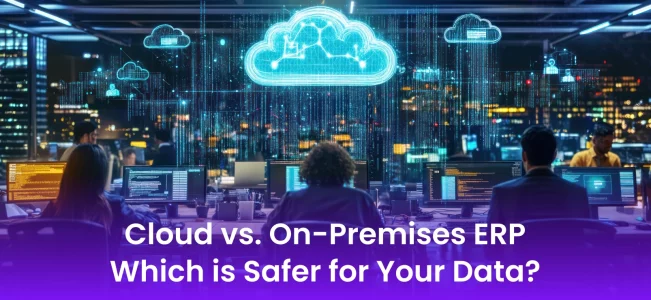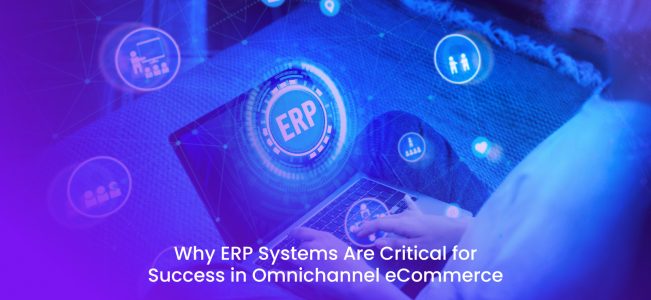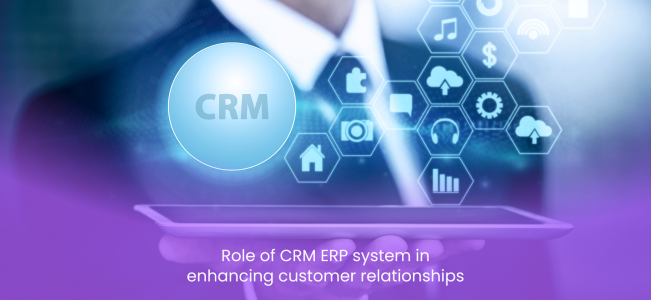Common ERP Data Migration Challenges
After the completion of an enterprise resource planning (ERP) system’s implementation in your organization, you anticipate the system to begin delivering the promised advantages and ROI. But how efficient the ERP software can be relies on how efficient your data migration process is.
An ERP data migration project includes transferring information and data, including master data, transactional data, historical data, and configuration data, from your legacy systems to the new ERP system. This process could determine the success or failure of your ERP implementation. It’s therefore important to comprehend some of the common challenges that organizations face throughout the migration process to ensure a smooth transition to the new ERP system and avoid expensive delays with your project.
Common ERP Data Migration Challenges
-
Ensuring Data Accuracy and Integrity
Legacy environments frequently include numerous disconnected systems, such as CRM, SCM, MES, and WMS, each keeping data in its own format. Over time, these systems can collect duplicate records, inconsistent data structures, and inadequate entries.
Why it matters
Without addressing these concerns before migration, data errors can interrupt reporting, decision-making, and system performance in the new ERP.
How to address it
Begin with data profiling and cleansing tools to perceive and correct concerns such as duplicates, missing values, and format discrepancies. Execute a data governance framework that creates ownership, quality standards, and policies for keeping clean, reliable data both throughout and post-migration.
-
Managing Data Validation and Testing
Inaccurate validation increases the possibility that migrated data will be compromised, incomplete, or incompatible with business processes. Errors found too late can bring interruptions throughout the business.
Why it matters
Poor testing can lead to bad data coming into the new system, resulting in costly post-migration concerns.
How to address it
Develop an all-inclusive testing plan that involves test situations, anticipated results, and acceptance criteria. Offer time for several testing phases, and include end users in user acceptance testing (UAT) to ensure the data fulfills real-world business demands.
-
Allocating Sufficient Resources
ERP data migration needs more than just IT support; it requires a combination of technical skills, business insight, time, and funding. Undervaluing this need can result in delays, additional costs, and compromised data quality.
Why it matters
Resource constraints can slow the project, maximize error rates, and put redundant stress on your internal teams.
How to address it
Create a resource plan at the beginning of the project. Clearly plan your budget, staffing, and accountabilities. If required, bring in external advisors or temporary staff to ensure your internal team can emphasize their key responsibilities while supporting the migration process.
-
Managing Complex Data Structures
Manufacturers and distributors deal with data that is usually reliant and hierarchical, such as bills of materials (BOMs), work orders, and production flowcharts. Legacy systems can keep custom data fields that have no direct correspondence in the new ERP.
Why it matters
Improper planning of these data structures can result in disruptions throughout inventory, production, or order fulfillment.
How to address it
Engage with your ERP partner to define data mapping strategies that maintain relationships between data elements. Plan for how to handle custom fields, and build or integrate third-party systems where required to ensure continuity.
-
Addressing Data Security and Compliance
Migrating sensitive data, including customer records, supplier information, or proprietary manufacturing processes, could present security risks. GDPR or HIPAA compliance regulations contribute as an additional layer of complexity.
Why it matters
Data breaches or compliance failures can lead to fines, reputational damage, or legal accountability.
How to address it
Execute strong encryption and access controls across the migration process. Ensure your ERP and data-management processes comply with significant regulations. Institute protocols for data retention, archival, and safe disposal.
-
Overcoming Technical Compatibility Issues
Numerous legacy systems are outdated, custom-built, or use incompatible data formats. Incorporating these systems with a contemporary ERP can be a key technical challenge.
Why it matters
Lack of compatibility can result in data silos, workflow inadequacies, or the requirement for time-demanding manual processes.
How to address it
Evaluate your existing infrastructure early in the project. Regulate where upgrades are required and plan for middleware, APIs, or phased system retirements. Involve your IT team and ERP partner to address these compatibility gaps promptly.
-
Ensuring Stakeholder Buy-In
It’s common to treat data migration as only an IT task. In reality, every department should be involved from the beginning because they are all influenced, including finance, operations, sales, and customer support.
Why it matters
Without stakeholder input, you risk overlooking crucial data and facing a clash when the system goes live.
How to address it
Recognize key stakeholders early and keep them engaged. Connect how the new ERP will offer advantages to their departments. Deliver clear details regarding the migration timeline, risks, and projected outcomes to ensure position and reduce confrontation to change.
Conclusion
Data migration is one of the most important phases throughout an ERP implementation, because organizations cannot enjoy the advantages an ERP system ensures without data migration without errors to the new ERP system. Ensure your project team, stakeholders, and external partners work in coordination and create a data migration plan for the successful completion of the data migration process and a streamlined transition from legacy systems to the new ERP system. This plan could recognize possible blockages in dealing with any ERP data migration challenges your organization may come across.
Why Choose CERP Suite?
CERP Suite stands out as the ideal choice when it comes to ensuring a streamlined and successful ERP data migration. Its intuitive interface, smooth integration capabilities, and strong data management tools, CERP Suite allows businesses to migrate data smoothly, ensuring accuracy and integrity throughout all departments. Its real-time insights and simplified processes let you rapidly adapt to the new system, while keeping compliance and securing sensitive data. Selecting CERP Suite not only streamlines migration but also enhances operational efficiency, ensuring you get a unified platform for long-term business success
